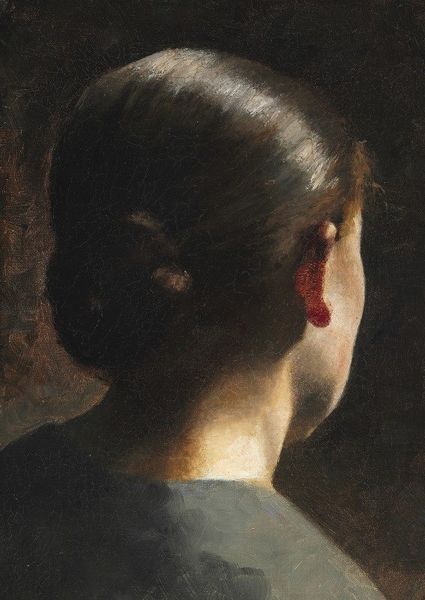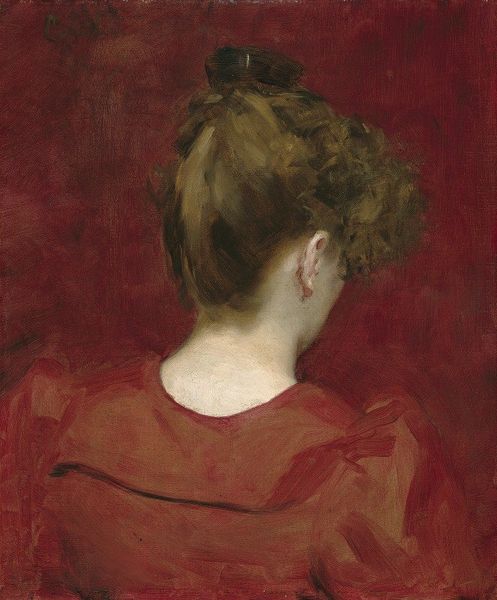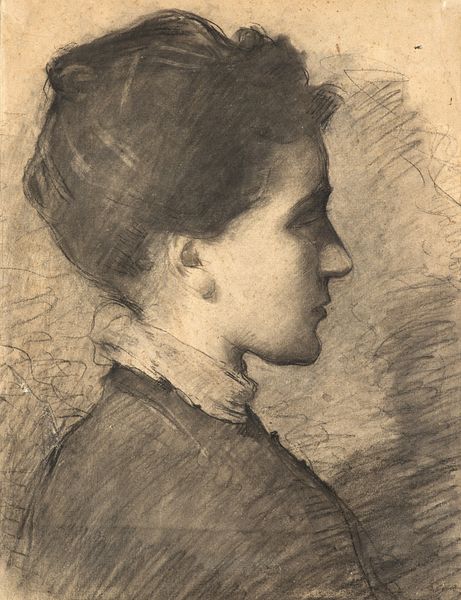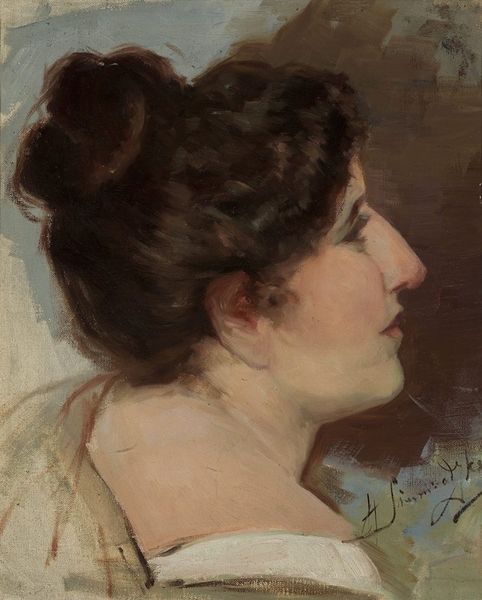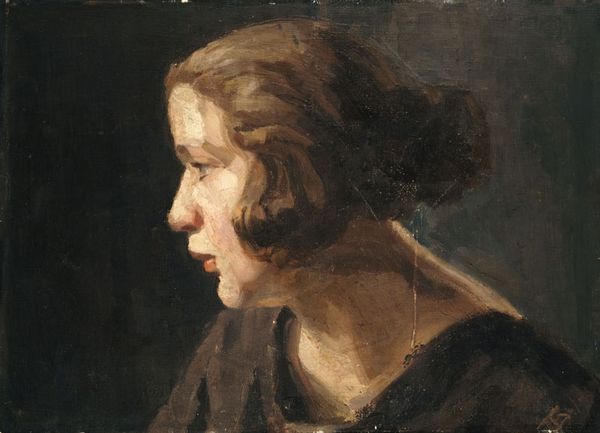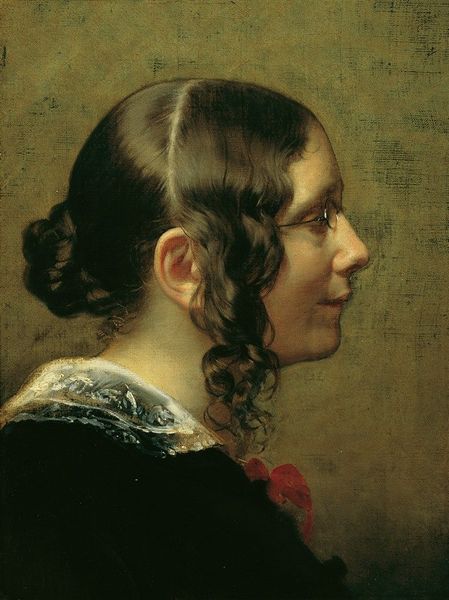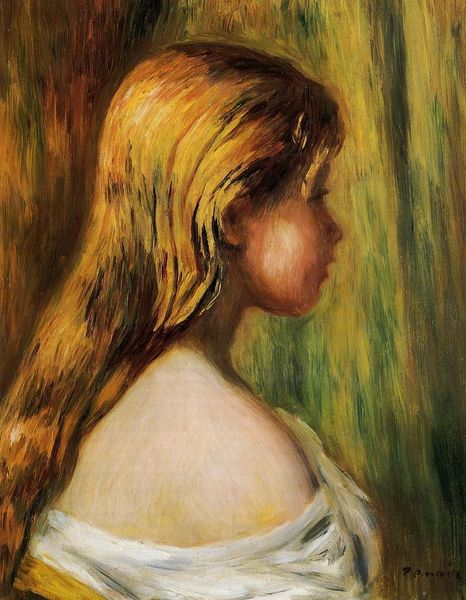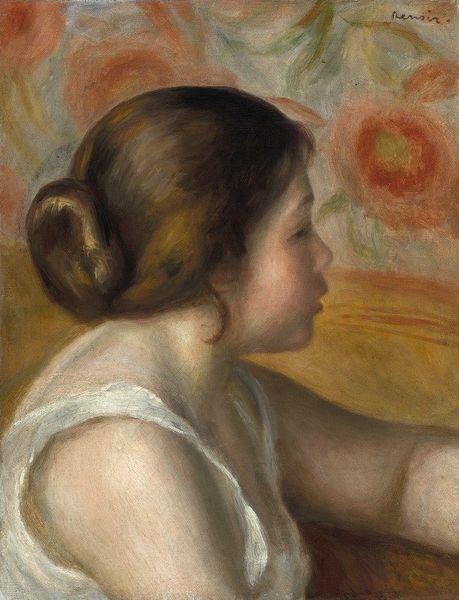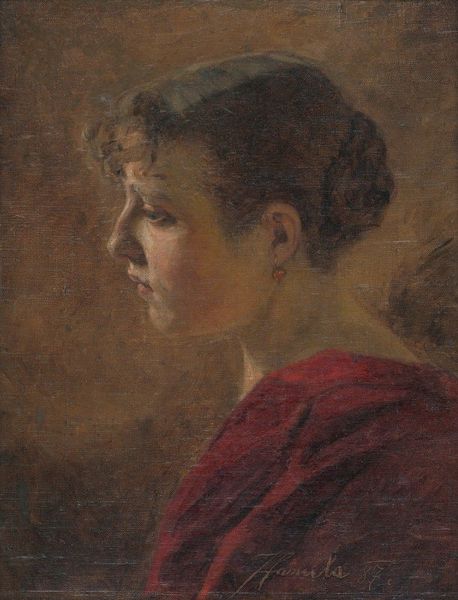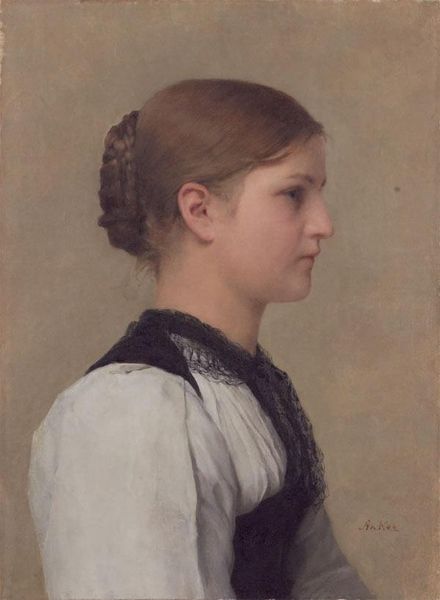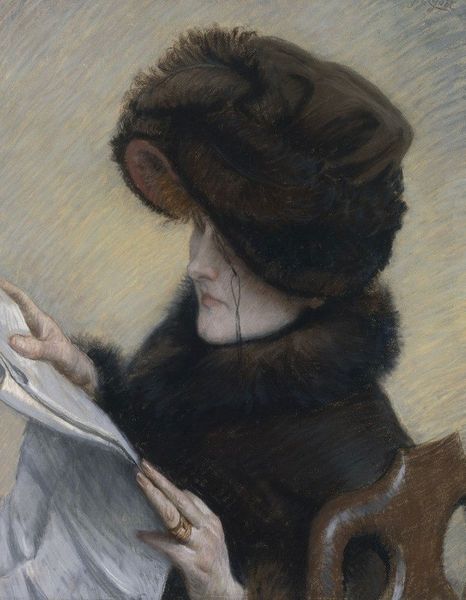
Copyright: Public Domain: Artvee
This is Peder Severin Krøyer's "Portrait of a Young Woman in Profile," painted in 1889. The composition is immediately striking for its use of light and shadow. Krøyer masterfully models the woman's face, with soft transitions that give her a sculptural presence, while the cool blue background emphasizes the warmth of her skin tones. The contrast enhances the sitter's introspective mood. Krøyer’s brushwork is deliberately visible. In structuralist terms, these visible marks function almost like signs, reminding us of the constructed nature of representation itself. The woman's gaze, directed beyond the frame, invites a semiotic reading, suggesting that what is absent might be as significant as what is present. Notice, finally, how the formal structure of the painting—its tonal contrasts, textured surfaces, and composition—achieves a delicate balance between presence and absence. This interplay is a key element in understanding the painting’s aesthetic power and its contribution to a broader cultural discourse on portraiture and identity.
Comments
No comments
Be the first to comment and join the conversation on the ultimate creative platform.
